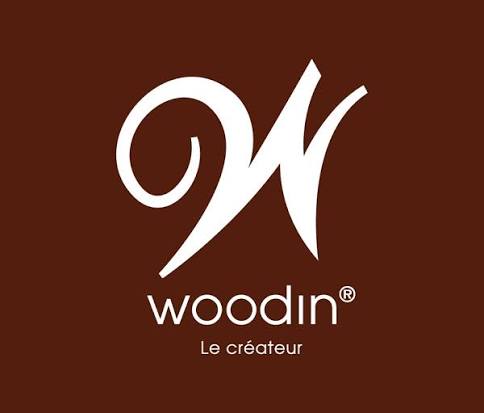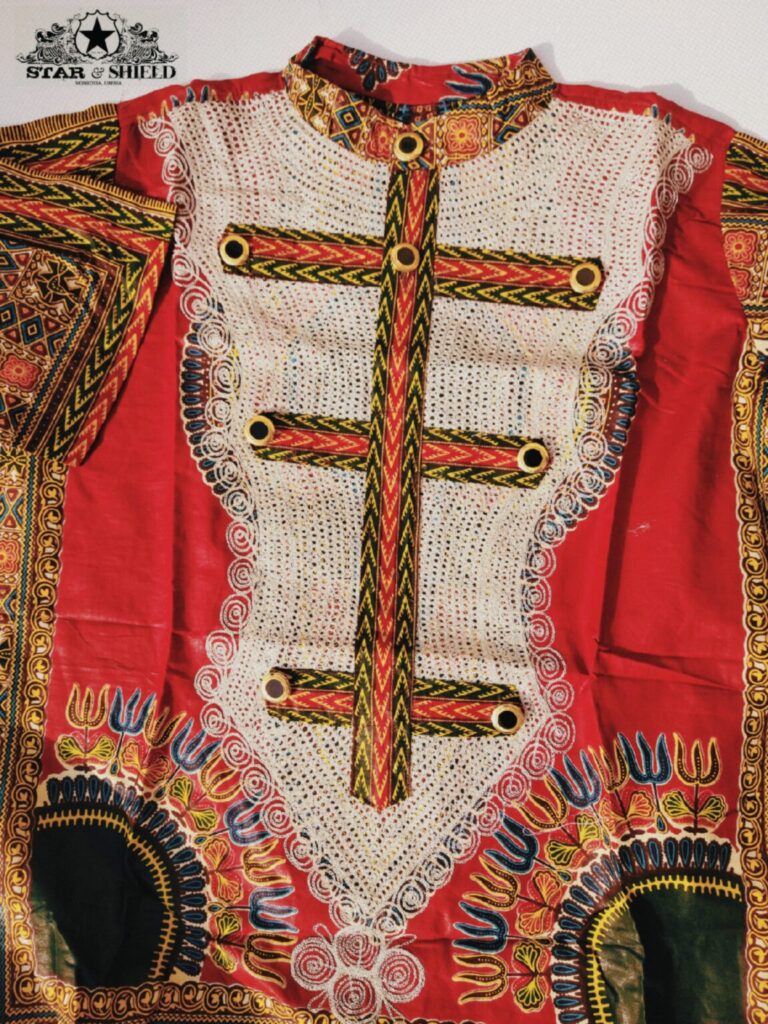In a bold move that signals shifting currents in global fashion, designer Tia Adeola recently made a strategic decision: after a decade building her eponymous brand in New York, she is relocating her entire supply chain to Nigeria. Her Fall/Winter 2025 collection, titled From Lagos with Love, will highlight local artisans and Nigerian craft, including cowrie shell beadwork and screen printed Ankara on satin. “It made sense to bring my 10 years of experience in New York back home and reinvest that knowledge and those resources in Lagos,” she says. “There’s so much talent here, but the infrastructure hasn’t caught up yet” .
Adeola’s pivot exemplifies a broader transformation unfolding across West Africa’s fashion landscape. As global brands seek to diversify beyond Asia-centric supply chains—a trend accelerated by trade tensions and tariffs—the region is being positioned as an alternative manufacturing base that combines technical skill with rich artistic heritage . From Ghana’s revitalized textile industry to Nigeria’s burgeoning garment clusters and Liberia’s emerging production hubs, West Africa is weaving itself into the fabric of global fashion.
The Regional Momentum
International luxury brands are taking notice of West Africa’s potential. Anya Hindmarch collaborated with Lagos-based Dye Lab in 2023 on hand-dyed kaftan dresses, while Karl Lagerfeld partnered with the Ethical Fashion Initiative to introduce a limited-edition tote bag made from fabrics handwoven in Burkina Faso and crafted in Kenya . In Ghana, DTRT Apparel Group is producing garments for international brands with backing from the International Finance Corporation to expand sustainable textile manufacturing across the region .
This growth is underpinned by strategic advantages that extend beyond cultural heritage. West Africa offers proximity to European and US markets via Atlantic ports, and countries like Ghana, Nigeria, and Côte d’Ivoire are benefiting from intra-African trade frameworks such as the African Continental Free Trade Area (AfCFTA), which reduce tariffs and encourage cross-border production networks .
Despite these promising developments, the path forward requires navigating significant challenges. According to 2023 data from the Fair Labor Association, West Africa currently has minimum wages ranging from **$44 per month in Nigeria**, compared to Bangladesh’s $113 per month, with living wage estimates between $250 and $320 in urban manufacturing zones . Additionally, logistical constraints remain—although many West African countries grow cotton, most is exported as raw fiber rather than processed domestically into yarn, fabric, and finished garments .
Case Study: Woodin – Redefining African Textile Tradition in Ghana

At the heart of Ghana’s fashion manufacturing renaissance stands Woodin, a textile brand that has successfully bridged traditional African aesthetics with contemporary commercial appeal. Under the creative influence of the late designer Kofi Ansah, who returned to Ghana after building a successful career in the UK, Woodin introduced transformative changes to how Africans interact with traditional textiles .
Ansah’s collaboration with Woodin and Ghana Textiles Production led to a revolutionary approach: introducing the sale of fabric in single yards instead of the standard six yards, making traditional cloth more accessible and functional for everyday wear . This shift from ceremonial to casual clothing sparked a retail revolution, enabling the production of skirts, blouses, shirts, and trousers that appealed to younger consumers while maintaining cultural resonance.
Woodin’s impact extends beyond retail strategy. Ansah was instrumental in launching the Friday African wear policy in Ghana, democratizing and regularizing the use of wax prints in professional settings . This initiative not only created consistent demand for local manufacturers but also helped build a fashion ecosystem where wearing African prints became a point of pride rather than occasional practice.
Today, Woodin continues to innovate, having recently launched the Noblesse de Woodin fabric collection in 2025, highly regarded for its elegance and quality . The brand represents a successful model of how traditional textile companies can evolve to meet modern market demands while preserving cultural integrity—a template other African manufacturers are following.
Case Study: Star and Shield Clothing – Building Manufacturing Infrastructure in Liberia

While Ghana’s Woodin represents the transformation of established textile traditions, Liberia’s Star and Shield Clothing exemplifies the birth of integrated manufacturing ecosystems from the ground up. The parent company of Camarilla Mask™ and 16 Tribes®, Star and Shield is making strategic investments to develop a truly Pan-African supply chain that respects cultural roots while delivering hand-crafted products to a global market .
The company recently broke ground on a $200,000 modernization of its 16 Tribes® Workshop in Monrovia, transforming the current facility into a modern industrial space with customer-accessible restrooms, larger entryways, and new administrative offices to accommodate growing staff and operational complexity . This infrastructure investment signals confidence in Liberia’s manufacturing potential despite the country’s underdeveloped industrial landscape.

Perhaps most innovative is Star and Shield’s proposed development of a 30-acre site in Margibi County, Liberia. The site will be used for a vertically integrated “mask farm”—a cultural and agricultural space focused on sustainable wood harvesting for mask carving, local cotton cultivation, and an interior-focused toothpick factory aimed at reducing Liberia’s reliance on imported wooden goods . The project, projected to cost between $250,000 and $300,000, represents a comprehensive approach to manufacturing that connects agricultural production with cultural preservation and export strategy.
Through its cotton village cooperatives in Duázon Margibi, Kakata, and Bong County, where smallholder farms collectively engage in planting, weeding, harvesting, and spinning cotton, Star and Shield is building agricultural infrastructure alongside manufacturing capacity . This integrated approach, though challenging, offers a model for how other emerging African manufacturers might develop vertical supply chains despite limited existing infrastructure.
The Nigerian Cluster Model: From Artisanal Craft to Collaborative Manufacturing

Nigeria’s fashion manufacturing evolution tells a different story—one of decentralized artisanal capacity and emerging collaborative clusters. Rather than relying on large-scale factories, brands like Iamisigo invest in community-led hubs and independent master artisans across Nigeria and its sourcing countries . This model allows for quality control and transparency while simultaneously building cultural infrastructure.
Iamisigo, which won Zalando’s 2025 Visionary Award, has partnered with global brands such as Victoria’s Secret and Zalando while retaining complete creative control over sourcing and production . The brand’s spokesperson articulates a position shared by many West African manufacturers: “West Africa is not an alternative to other manufacturing regions; it is our primary source of creative and production identity” . While unit costs are higher due to handcrafting and logistical complexity, the value of narrative, craft, and social impact far outweighs external sourcing considerations.
Meanwhile, NKWO, a Nigerian label pioneering sustainable design through textile recycling, is developing a digital platform to map and connect small-scale artisans, tailors, and textile recyclers . This initiative bridges the gap between informal craft communities and larger fashion supply chains, demonstrating how technology and tradition can combine to reduce waste and empower local makers within a transparent, traceable network.
Industry advocates like those behind Nigeria’s garment cluster revolution urge fashion businesses to move from isolation to integration. They recommend that Nigerian fashion entrepreneurs map their current textile production capacity and identify strategic partners whose capabilities complement their services—embroiderers, pattern makers, fabric suppliers, or finishing specialists . The creation of communication hubs for sharing manufacturing opportunities and coordinating fashion projects across networks represents the first step toward building a collaborative manufacturing ecosystem that can compete internationally.
Overcoming Challenges: Infrastructure, Intellectual Property & Ethical Considerations
The path to establishing West Africa as a durable manufacturing hub is not without obstacles. Infrastructure deficits remain significant, with manufacturers facing challenges ranging from unstable electricity to port congestion. As Vanessa Erogbogbo, director of the International Trade Centre’s sustainable and inclusive trade division, notes: “We face challenges with everything, from unstable electricity to finding the right fabrics. We often have to look abroad for alternatives, meaning we pay higher tariffs adding to the pressure on small manufacturers” .
The intellectual property protection also looms large as West African designs gain global popularity. “Sometimes, proof of success is when everyone’s copying you—then you know what you have is valuable,” Erogbogbo says. “But at the same time, we have to make sure that African design and African intellectual property is protected” . To address this, the International Trade Centre is working with the World Intellectual Property Organization to provide intellectual property support to African fashion brands, helping them protect their designs while maintaining visibility and attribution in international collaborations .
Perhaps most importantly, West Africa has an opportunity to avoid the race to the bottom that characterized earlier manufacturing hubs like Bangladesh and Cambodia. With minimum wages in Nigeria as low as $44 per month compared to Bangladesh’s $113, there are legitimate concerns about whether the continent’s growing role in garment production may replicate problematic dynamics seen across Asia . However, initiatives such as the Ethical Fashion Initiative and brands like Studio 189, which partners with artisanal cooperatives across Ghana to create jobs and provide skills training, point toward more ethical alternatives .
Conclusion: The Way Forward
West Africa’s emergence as a potential manufacturing hub comes at a pivotal moment in global fashion. As brands seek to diversify supply chains and consumers increasingly value transparency, heritage, and sustainability, the region offers something unique: the opportunity to build manufacturing ecosystems that are both globally competitive and culturally grounded.
The success of this transformation will depend on multiple factors: continued investment in infrastructure, protection of artisan rights and intellectual property, fair labor practices, and most importantly, long-term commitments from global brands rather than short-term optics .
As Rukky Ladoja, co-founder of Dye Lab, observes: “The infrastructure has strong foundations, it just needs recognition and belief. It’s sustainable, heritage-driven and ready for global markets” . From Woodin’s commercial redesign of traditional textiles in Ghana to Star and Shield’s integrated cotton villages in Liberia and Nigeria’s collaborative artisan clusters, West Africa is not merely replicating existing manufacturing models—it is pioneering a new approach that balances commercial viability with cultural preservation.
The journey ahead remains complex, but the direction is clear. As Tia Adeola’s homecoming demonstrates, the future of West African manufacturing lies not in being an “alternative” to other regions, but in embracing its unique identity—one that combines technical skill with artistic heritage, and commercial ambition with community impact. In this vision, West Africa isn’t just the next manufacturing hub; it’s the next model for what manufacturing can be.


Leave a Reply